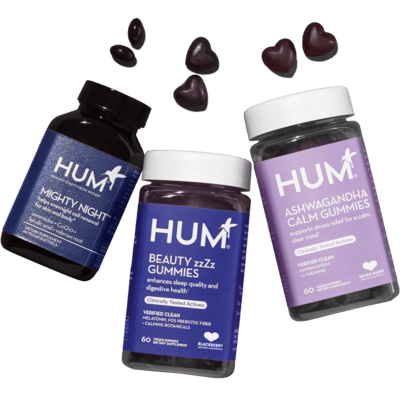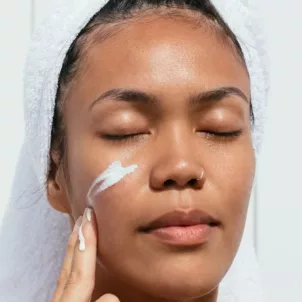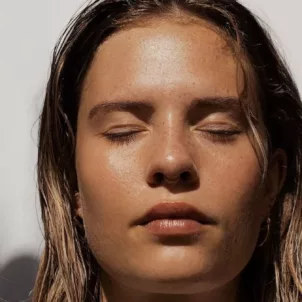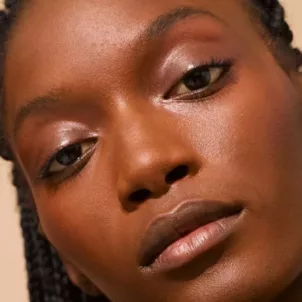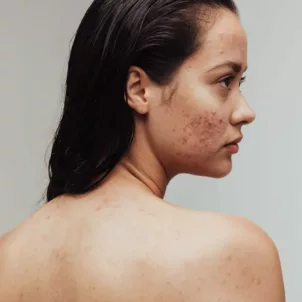Acne is a common skin concern, but did you know there are different kinds of breakouts? Dermatologists explain the eight types of acne—and share how best to treat each.
As someone who has struggled with acne since the age of 14, I’ve come to learn that not all breakouts are created equal. When you picture pimples, you likely think of whiteheads or pustules: clogged follicles with a white tip. But there are actually several different types of acne beyond your standard breakout.
Why does this matter? Different kinds of acne respond to different kinds of treatment. Correctly identifying what type of breakout you’re dealing with can help you get rid of it ASAP. And while there are certain treatments that can help acne in general (think: washing your face every day, using retinol, and limiting dairy intake), certain pimples require a more nuanced approach.
Below, dermatologists break down the different types of acne and explain how to treat each one.
The Different Types of Acne
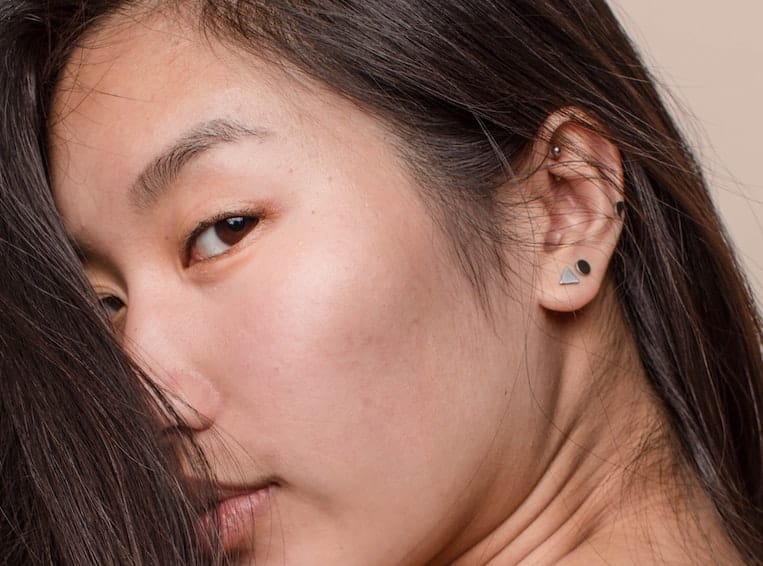
Below, dermatologists name the different types of acne—from blackheads to cysts.
Comedonal Acne
Comedonal acne refers to the presence of clogged pores, which cause whiteheads and blackheads.
Blackheads
Also known as open comedones, blackheads are open pores that get filled with oil. “The oil is then exposed to air and oxidizes, which makes it appear black,” explains Purvisha Patel, MD, FAAD, a board-certified dermatologist in Tennessee. The best way to think of them is like a “plug” of sebum, old skin cells, and bacteria. You might notice blackheads on your nose—but they can crop up on other parts of your face too.
Whiteheads
Whiteheads are pores that have been clogged with oil and dead skin cells. “The pore turns into a white bump, which is seen on the skin,” Dr. Patel explains. These tend to occur more frequently among people who have oily skin.
Inflammatory Acne
“Acne can also be inflammatory, which refers to red bumps known as papules or pustules,” says Marisa Garshick, MD, FAAD, a board-certified dermatologist in New York.
Papules
A papule is a small, raised bump on the skin. Papules are red in color and swollen from inflammation. They’re more painful than whiteheads or blackheads, but they’re usually not as painful as cysts or nodules. Papules are what you may think of when you have an “unpoppable” pimple. They shouldn’t be popped, as that can lead to more inflammation and scarring.
Pustules
Aptly-named, pustules are what you probably think of when you picture a pimple. It’s a zit that has come to a head with a white, pus-fulled top (cringe, we know). So, what’s the difference between a pustule and a whitehead? A whitehead is a clogged pore (also known as a hair follicle). A pustule is a clogged follicle that’s inflamed and full of pus.
Nodulocystic Acne
This term refers to deeper cystic breakouts and bumps, according to Dr. Garshick. If you’ve ever experienced large, painful bumps that don’t rise to the surface of your skin, you’ve likely dealt with nodulocystic acne.
Cysts
Ever felt a pimple forming underneath your skin? Cystic acne doesn’t typically have a white top—instead, they form under your complexion (but they’re still filled with pus). “Cysts are caused by follicular occlusion, bacterial or fungal overgrowth, oil production, and inflammation,” explains Purvisha Patel, MD, FAAD, board-certified dermatologist in Tennesee. “They tend to form deep in the hair follicles, usually appear around the neck and jaw, and typically don’t have a pustule. They can be painful depending on your inflammatory response.”
Nodules
Nodules are another form of nodulocystic acne. They’re different from cysts in that they aren’t filled with pus—instead, they usually contain hardened sebum. Instead, they form a hard bump deep in the skin and feel painful at the surface. Nodules aren’t always red. In fact, they can match your skin tone. They do take time to go away and usually require intensive treatments.
Hormonal Acne
If you notice that breakouts tend to pop up right around your period, you’re likely dealing with acne caused by hormones. “Hormonal acne worsens during the menstrual cycle and affects the lower half of the face with deeper, cystic stubborn breakouts,” Dr. Garshick says. “Often those with hormonal acne will complain of just one or two deeper breakouts, but they can linger for several weeks.”
Fungal Acne
Despite being referred to as acne, fungal acne isn’t *technically* a classification of acne at all. It’s an infection of the hair follicle caused by an overgrowth of yeast on your skin (as opposed to bacteria that causes acne). “It is usually found on your back, shoulders, and chest and looks and feels like acne,” Dr. Patel says. However, it won’t respond to traditional acne treatments—it requires topical or oral antifungal medications.
How to Treat Acne By Type
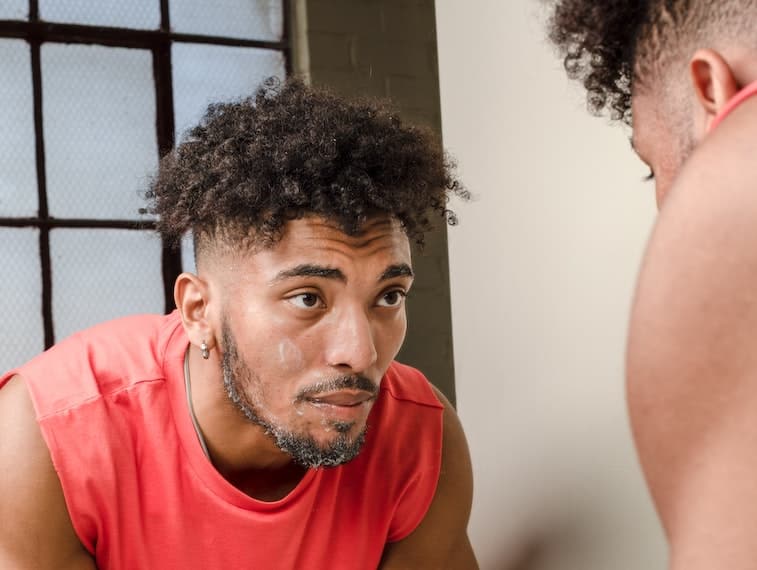
While diagnosing yourself at home is tempting, the safest and most effective way to treat acne is to see a dermatologist. “It’s best to see a derm for further guidance, especially when you’re not getting the results you want,” Dr. Patel says. “If acne is not treated correctly it can result in scarring, hyperpigmentation, and disfigurement.” That said, these derm-approved tips can help.
Comedonal Acne
Since comedonal acne refers to clogged pores, you want to use topicals to help clear out your pores. “For those with comedonal acne, including whiteheads and blackheads, it can help to use salicylic acid, an exfoliating beta-hydroxy acid, and retinoids to help address the clogged pores,” Dr. Garshick says. Just be careful not to overdo the exfoliating, as you could damage your skin barrier (the outermost layer of your skin) and cause even more irritation.
Another option? Get your blackheads or whiteheads extracted by a professional, says Dr. Patel. If you’re hoping to avoid any scarring or damage to your skin barrier, this is your best bet. A professional extraction will quickly clear out the pore so your skin can start healing.
Want to give your complexion a boost? Try taking HUM’s Daily Cleanse. It’s packed with natural detoxifiers to help clear your skin from the inside out.
Inflammatory Acne
“While those with inflammatory breakouts can also benefit from using a retinoid and salicylic acid, benzoyl peroxide or sulfur are other ingredients to consider to help address the bacterial component and inflammation,” Dr. Garshick says. “In some cases, oral or topical prescriptions may be helpful as well.” Nutrition is also a factor at play here. If you have food sensitivities or allergies, that would contribute to inflammatory acne. Additionally, a high-inflammatory diet could impact your complexion. Try incorporating anti-inflammatory foods (like berries, leafy greens, and fatty fish) into your diet to help.
Nodulocystic Acne
“Some of the treatment options for those with nodulocystic acne may include retinoids and benzoyl peroxide, it is often recommended to use prescriptions, either oral or topical, which may include oral antibiotics or isotretinoin or other hormonal targeting treatments such as spironolactone or oral contraceptive pills,” Dr. Garshick says.
Hormonal Acne
When someone notices breakouts around their period or suspects a hormonal component, it can be helpful to consider hormonal treatments like spironolactone or oral contraceptive pills. You can also support a clear complexion by incorporating hormone-balancing foods (such as eggs, fatty fish, leafy greens, avocados, and nuts). Or, try taking HUM’s Moody Bird, which is made with a potent herbal blend to support healthy hormone balance.
Fungal Acne
Since fungal acne is an overgrowth of yeast instead of bacteria, it requires antifungal treatments. “Exfoliating Washes with sulfur, zinc tea tree oil, ketoconazole, and selenium sulfide that kill the fungal organism help,” Dr. Patel says. She adds that an exfoliating body wash can help (Visha Skincare Top2Toe has bakuchiol, zinc, and tea tree oil to help with fungal acne).
The Takeaway
There are several different types of acne, and each one requires different treatments. That’s why familiarizing yourself with the different kinds of acne is helpful. But remember that your best bet is to see a professional. “Because acne can lead to scarring, it is important to treat early and to avoid doing anything that can exacerbate or worsen the scarring as that can be much harder to treat,” Dr. Garshick says. “There are a lot of options available to treat acne but using too much or using products incorrectly can lead to more skin issues and concerns.”
While treatments for acne matter, lifestyle matters too. Dr. Patel recommends staying hydrated (aim to drink at least six glasses of water), getting enough sleep (at least eight hours), a multivitamin (HUM Nutrition’s Base Control is a great option), a probiotic (like HUM’s Gut Instinct), and being mindful of your dairy and sugar intake.
